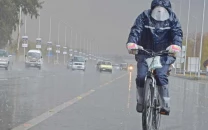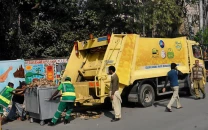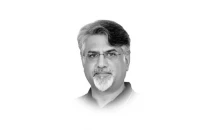Rural inflation
As an agriculture-driven economy, Pakistan urgently needs to formulate ways to improve life in rural areas.

Recent SBP figures show that rural areas were the worst-hit by food price inflation last year, both in real terms and the relative increase. This is a surprising and worrying trend, given that rural areas are also poorer in general; and with no new jobs and housing, most major urban centres cannot accommodate an upturn in internal migration. Most of the increase, according to the SBP, came in the latter half of 2020, implying that Covid-19 may have had some impact, although the data available is not detailed enough to establish the extent of the impact.
The central bank’s data shows that average food inflation for the 12 months from December 2019 to December 2020 was 13.3% in urban areas, up from 10.4% for the previous year. This represents a 28% increase in terms of the previous inflation rate. Meanwhile, rural areas saw inflation go up from 11.3% to 16.2%, with the rate of increase working out to a whopping 43%. Also, despite the attempts of all governments to exaggerate their poverty alleviation efforts, independent reviews are always on hand to pop the bubble. According to the World Bank estimates of 2018, rural poverty stood at a stark 36%, or twice the already-high urban poverty rate of 18%. It is also notable that the poverty gap has not improved since the turn of the century.
As an agriculture-driven economy, Pakistan urgently needs to formulate ways to improve life in rural areas. Keeping food prices low would simply be doing the bare minimum. Whether it is through the improved distribution of subsidised food or regulating wages, solutions need to be implemented. Unfortunately, due to a mix of illiteracy and the concentrated nature of the agriculture sector — most farmers are sharecroppers working for the landowning political elite — there is no one to stand up for the rural poor.
When reviewed in hindsight, most of the agriculture reforms undertaken by successive governments almost exclusively benefitted the land-owners. Some of them actively hurt the actual farmers. This cannot go on. We only need to look at India to see what happens when farmers are pushed to their breaking point.
Published in The Express Tribune, February 2nd, 2021.
Like Opinion & Editorial on Facebook, follow @ETOpEd on Twitter to receive all updates on all our daily pieces.














COMMENTS
Comments are moderated and generally will be posted if they are on-topic and not abusive.
For more information, please see our Comments FAQ